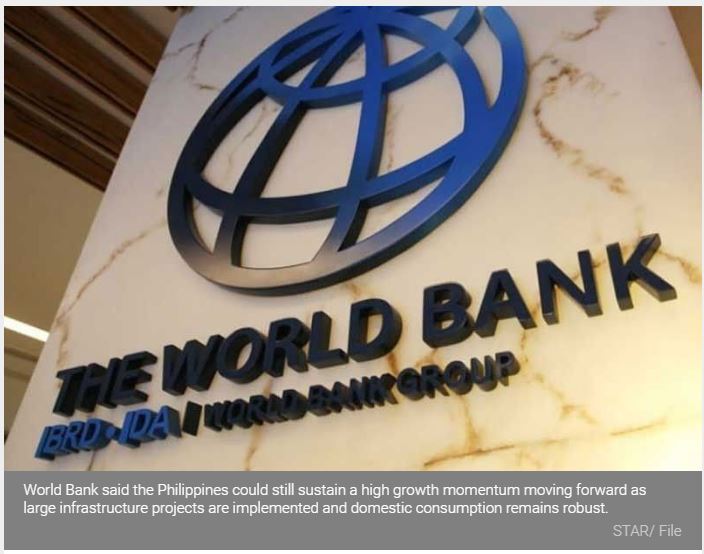Philippines: World Bank keeps growth forecast at 5.8% for 2019
MANILA, Philippines — The World Bank has retained its growth forecast for the Philippines of 5.8 percent in 2019, accelerating to 6.1 percent this year and sustaining momentum at 6.2 percent in 2021 throughout 2022.
In its January 2020 Global Economic Prospects Report, the multilateral lender kept the downgraded growth forecasts for the country made in October in relation to external challenges, including the US-China trade war and slower public investments.
This compared with the likewise downgraded April and June 2019 forecasts of 6.4 percent for 2019 and 6.5 percent for 2020 on account of the delay in the passage and enactment of the national budget.
World Bank said the Philippines could still sustain a high growth momentum moving forward as large infrastructure projects are implemented and domestic consumption remains robust.
“Domestic demand will continue to benefit from generally supportive financing conditions, amid low inflation and robust capital inflows,” the report said.
Growth projections for the Philippines track expectations in East Asia and the Pacific where growth is projected to slow from an estimated 5.8 percent in 2019 to 5.7 percent in 2020.
“East Asia and Pacific region has been experiencing a continued cooling of domestic demand in China alongside sizeable external headwinds. Global demand has weakened, and trade policy uncertainty related to trade disputes between China and the United states was elevated prior to the recent bilateral agreement,” World Bank said.
Other developments that create risks to growth include trade tensions between Japan and Korea, a maturing electronics cycle, and disruptions caused by rapid shifts in technological and emission standards.
Despite these changes, World Bank said the balance of risks to the growth outlook has improved “but is still tilted to the downside.”
These downside risks include a sharp slowdown in the global trade war as a result of a re-escalation of trade tensions, and a sharper-than-expected slowdown in major economies.
On the other hand, the recent trade agreement between China and the US may lead to a sustained reduction in trade uncertainty, “resulting in a stronger-than-expected recovery of regional investment and trade.”
Global growth is expected to recover modestly to 2.5 percent this year from 2.4 percent last year and investment and trade gradually recover from last year’s weakness.
Growth among advanced economies as a group —US, euro Area and Japan —is expected to weaken to 1.4 percent in 2020 in part due to the continued weakness in manufacturing.
Source: https://www.philstar.com/business/2020/01/10/1983472/world-bank-keeps-growth-forecast-58-2019


 English
English




